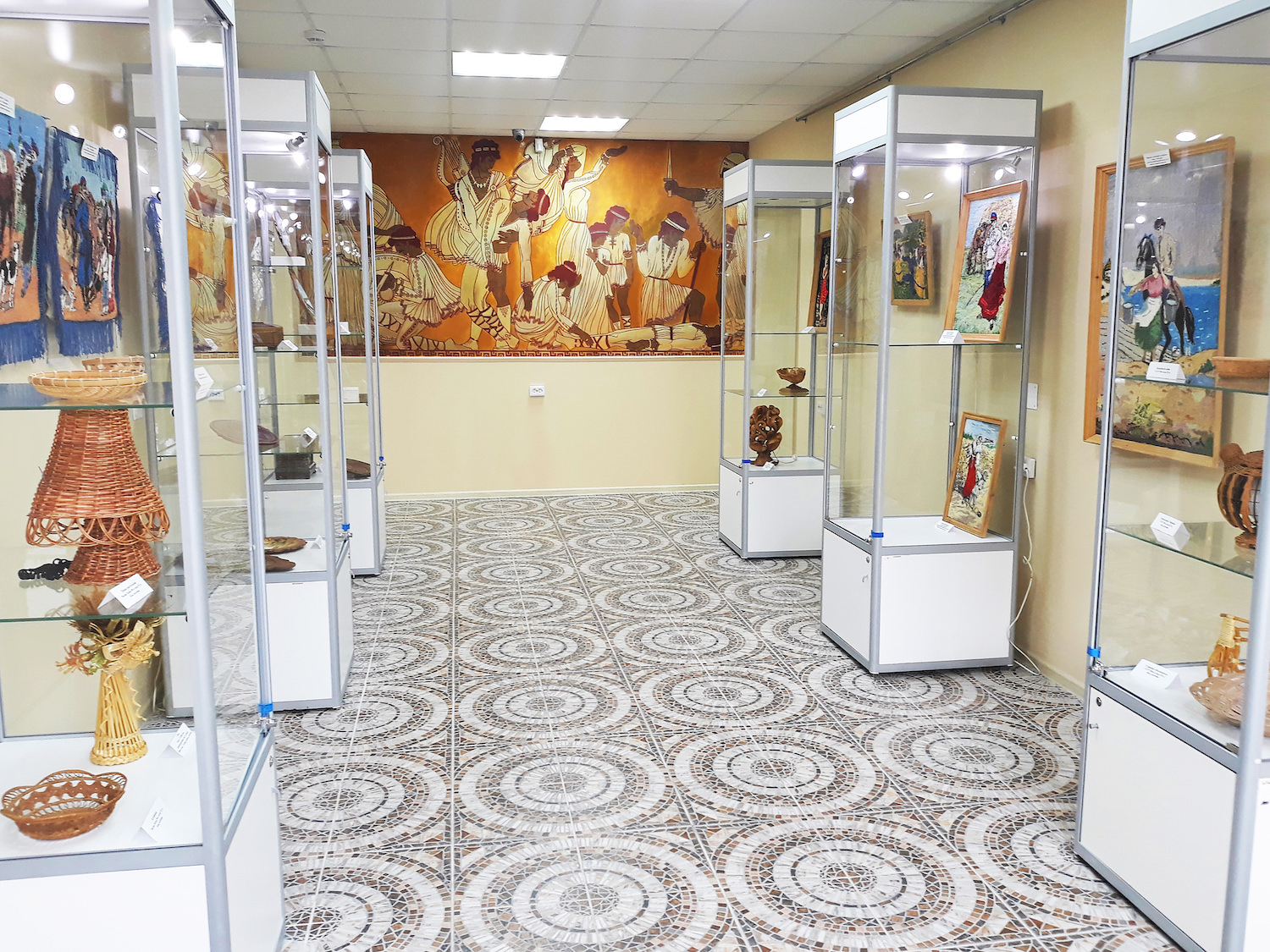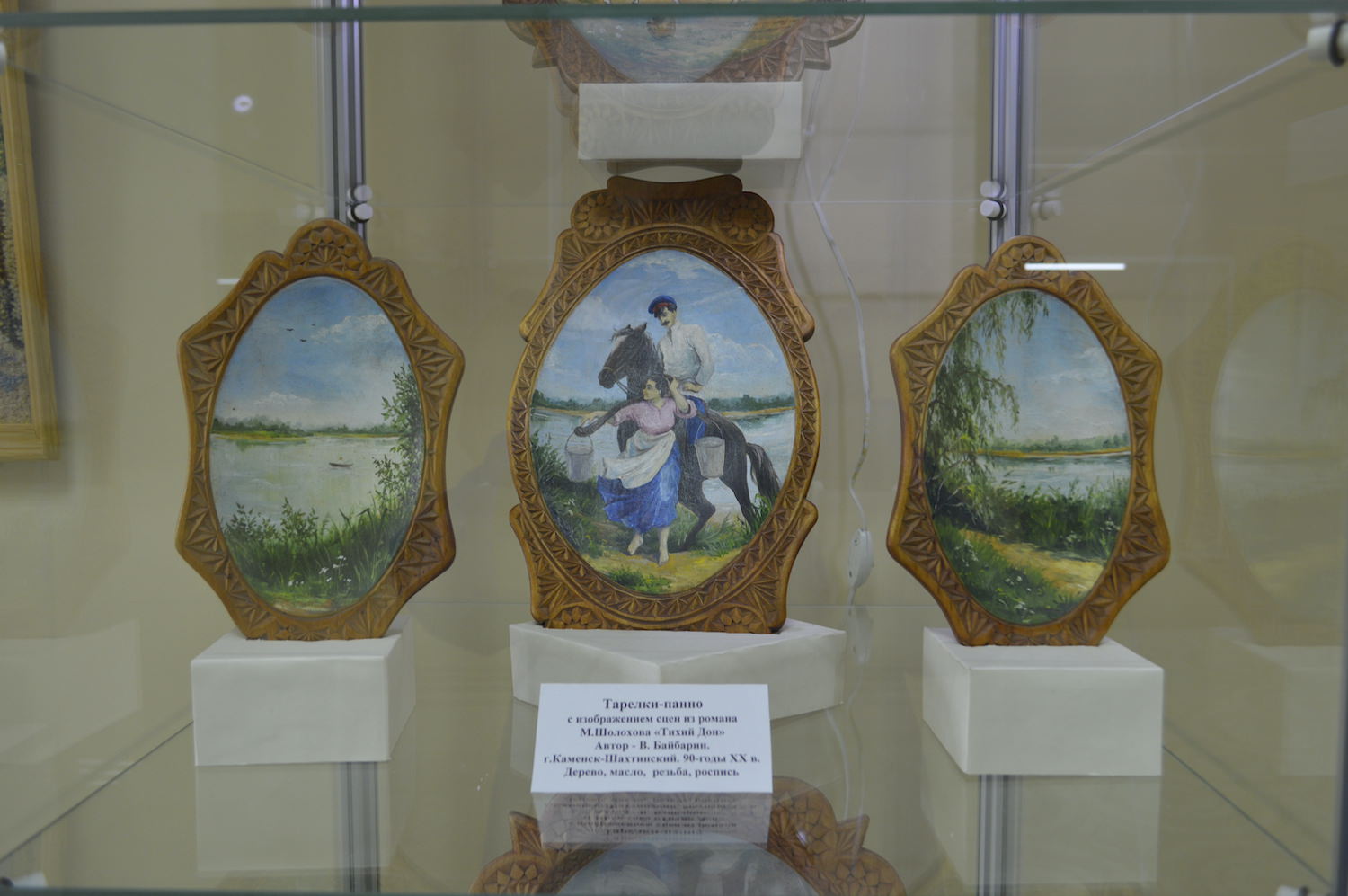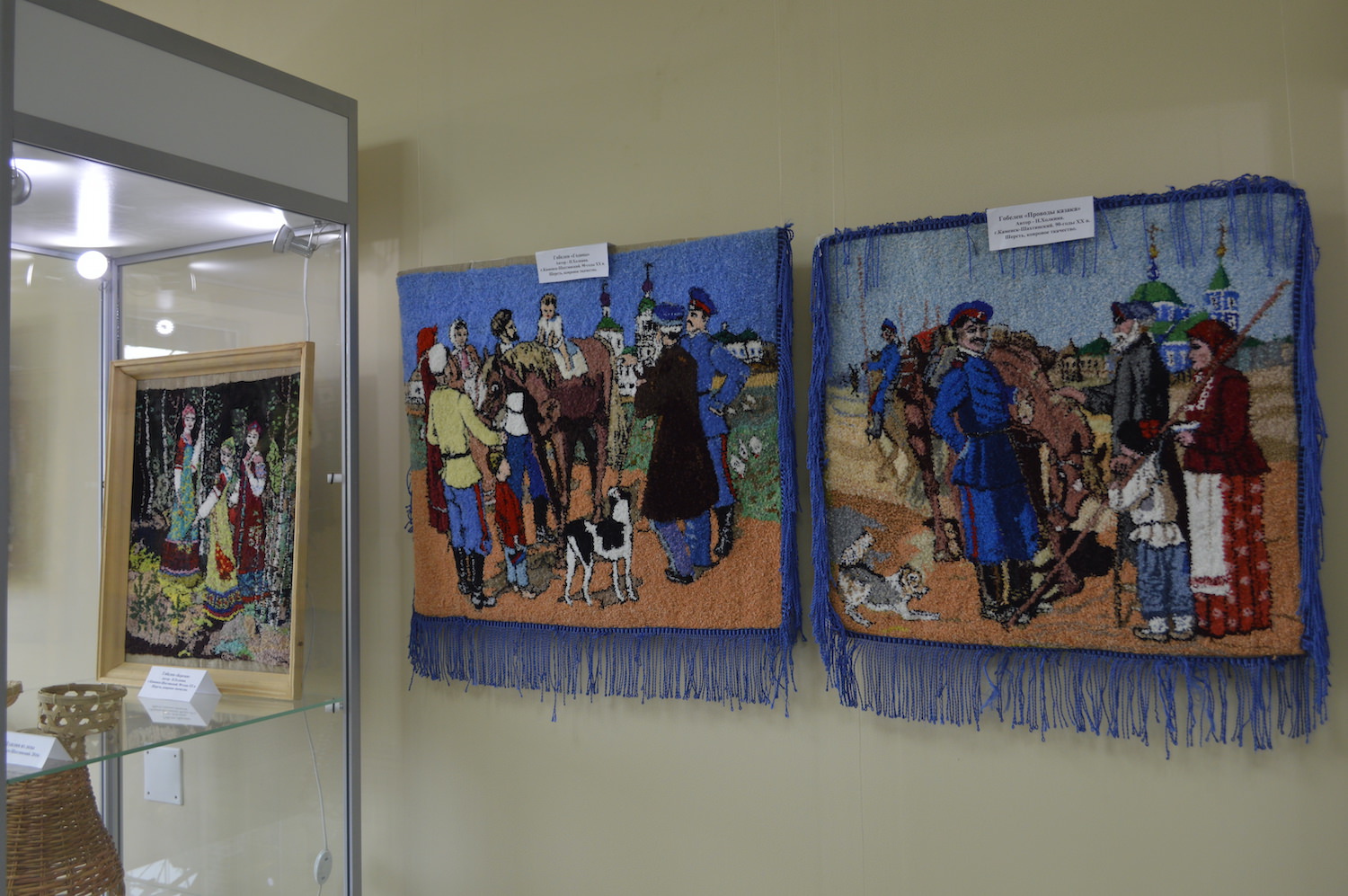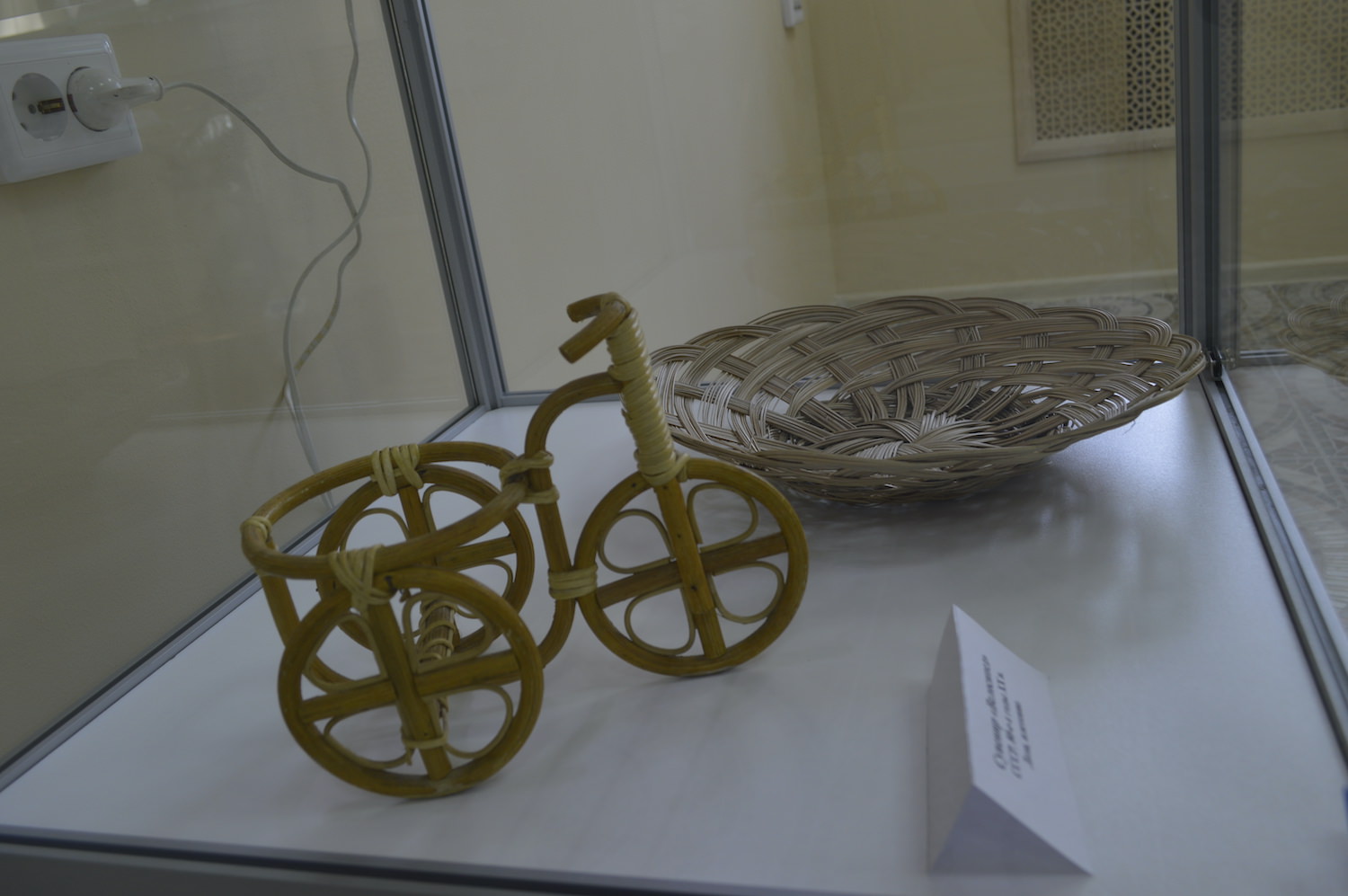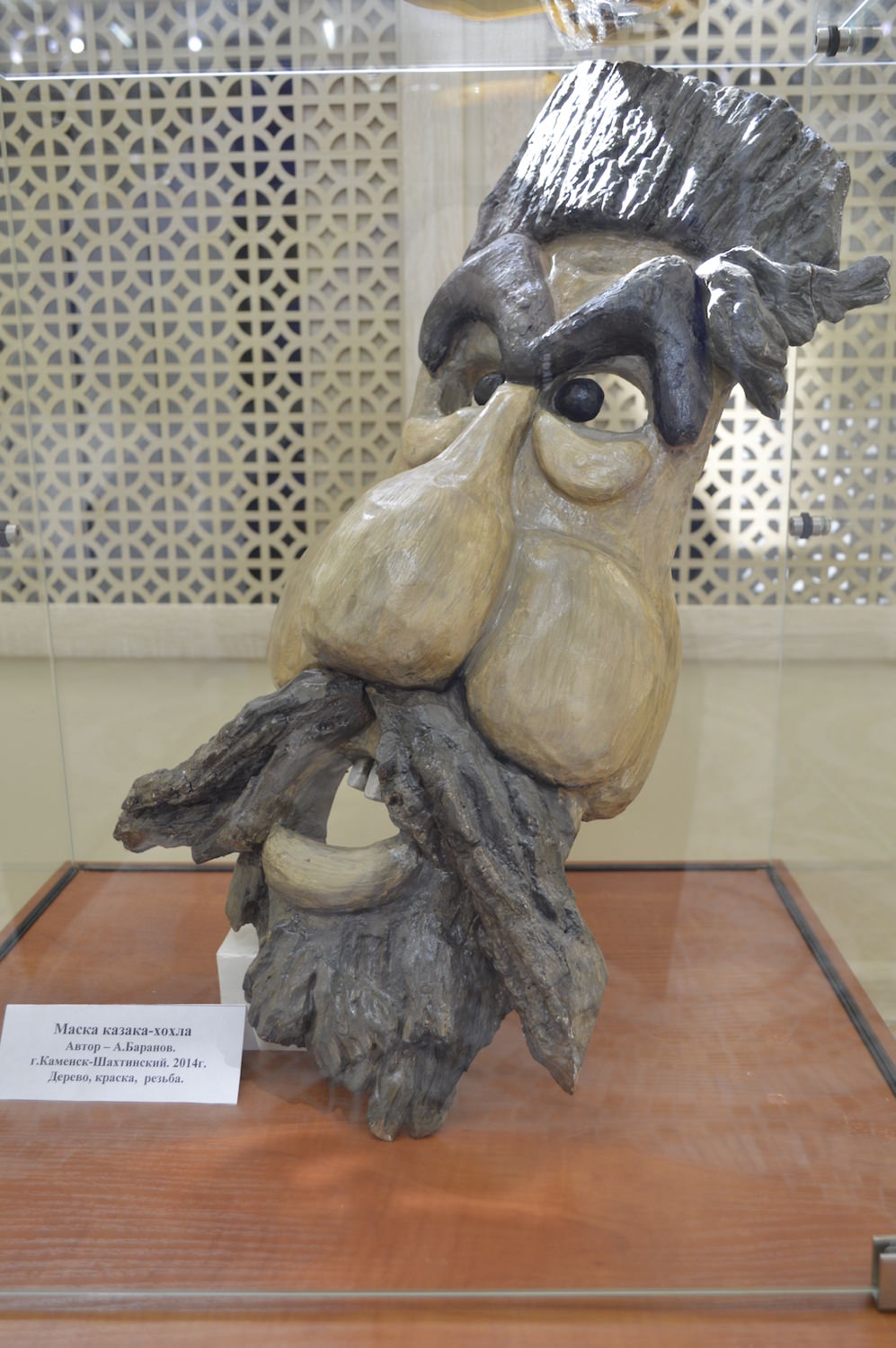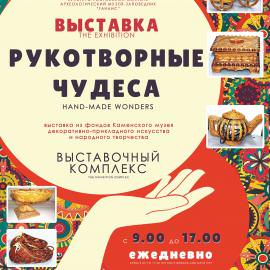
No matter how fast the current time is running, the creations of human hands still cause admiration and attract attention, regardless of whether they are antiques or created by our contemporaries.
The exhibition "Man-made wonders" presents the author's works of master Vasily Baybarin, made in the technique of triangular-cut geometric wood carving and master Evgeny Bukhantsov, made in the technique of volumetric wood carving. Our ancestors knew that wood has water resistance, thermal insulation, low density, a rich variety of patterns and textures; it is convenient to process and harvest.
Another direction of decorative and applied art presented at the exhibition is carpet weaving. In the early period of the development of the weaving craft, fabric like matting or matting was made from various herbs, twigs, tree bark, reeds. Archaeologists have found traces of mat prints on clay vessels of the Neolithic era. The basis of the vessels of this period was a cloth plastered with clay on both sides and subjected to firing.
For centuries, the technique of making carpets has not changed. The use of thread coupling techniques makes it possible to obtain a drawing both geometric, graphically clear, and vegetative, painterly-free. Modern authors make carpets, turning them into real paintings to match the paintings. One of such masters is Nina Vasilyevna Kholkina.
The exhibition will introduce you to another man–made miracle - vine weaving. Weaving, as a craft, has a long history and it originated earlier than metal and woodworking, which is due to the large amount of natural material and the lack of production tools. It has its roots in the Neolithic era, or the Stone Age, during this period in different parts of the world people began to make mats, vessels, baskets and tools for fishing and hunting. With the help of weaving, the walls of houses for housing and farming were built. According to one version, weaving was the progenitor of weaving. In the objects made of vines, there is a sense of thoughtfulness in the proportions of lines and shapes, the rhythm of weaving, texture and color of the material.
Imported exhibition from the funds of the Kamensky Museum of Decorative and Applied Arts and Folk Art.
Time of the event:
April 1 - July 30, 2021
